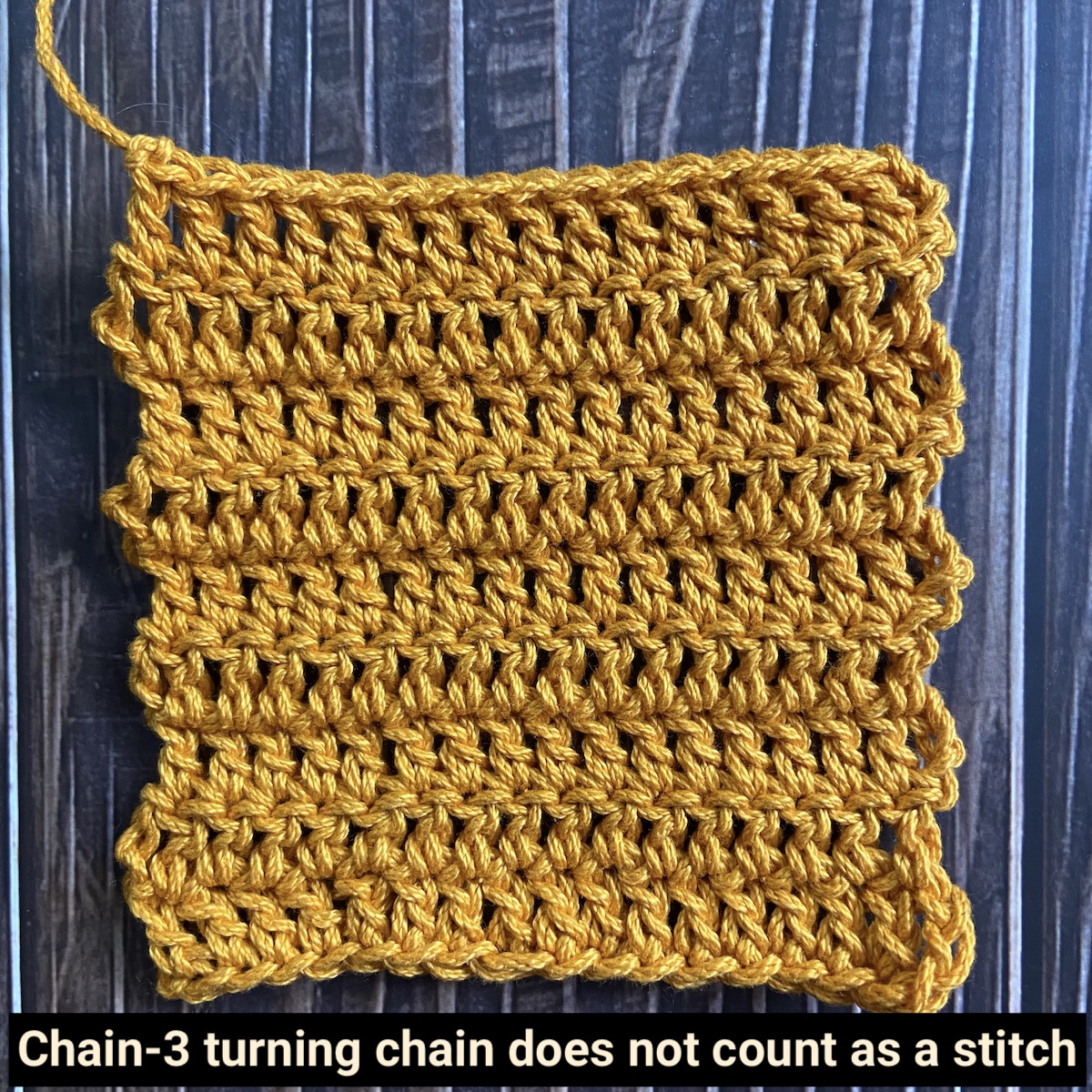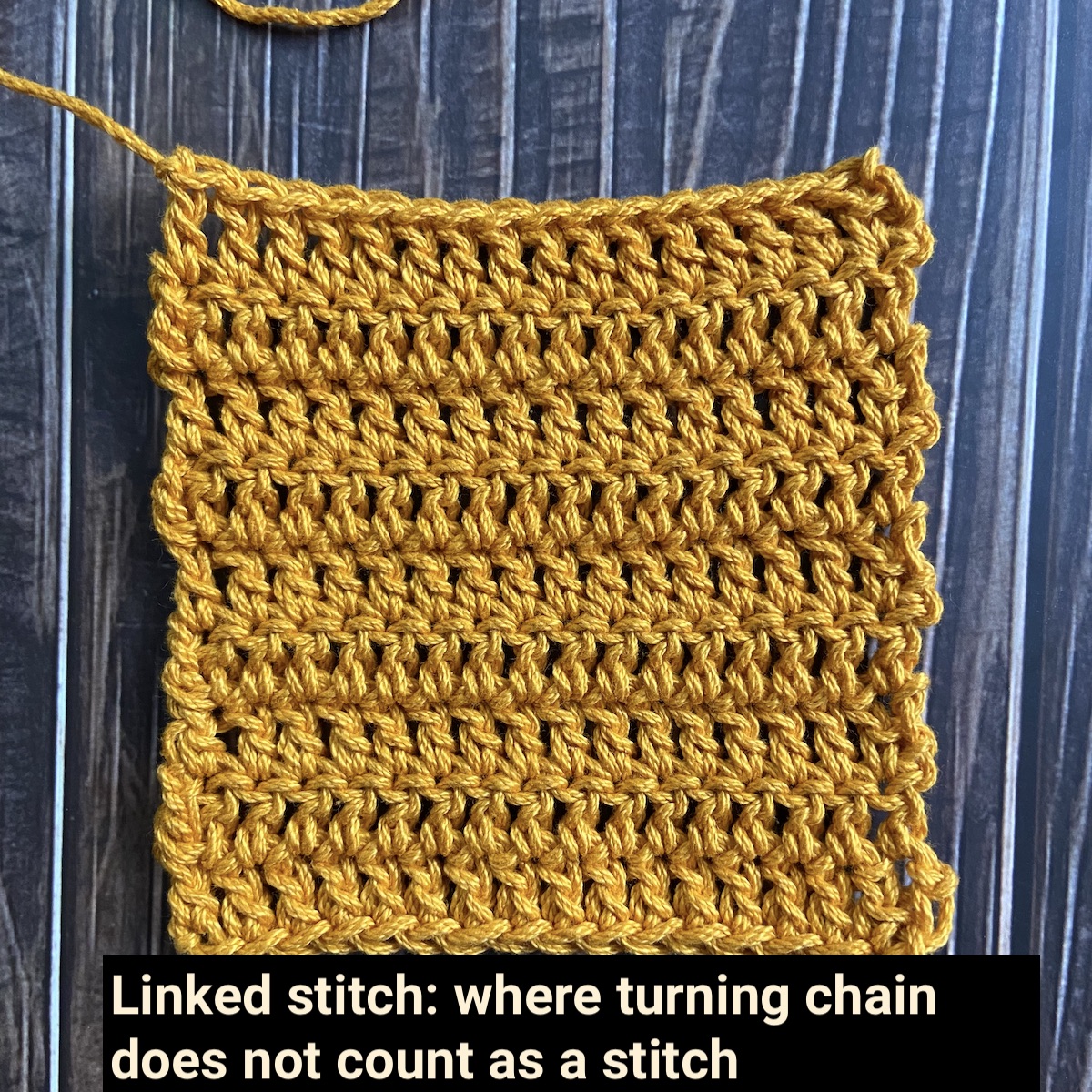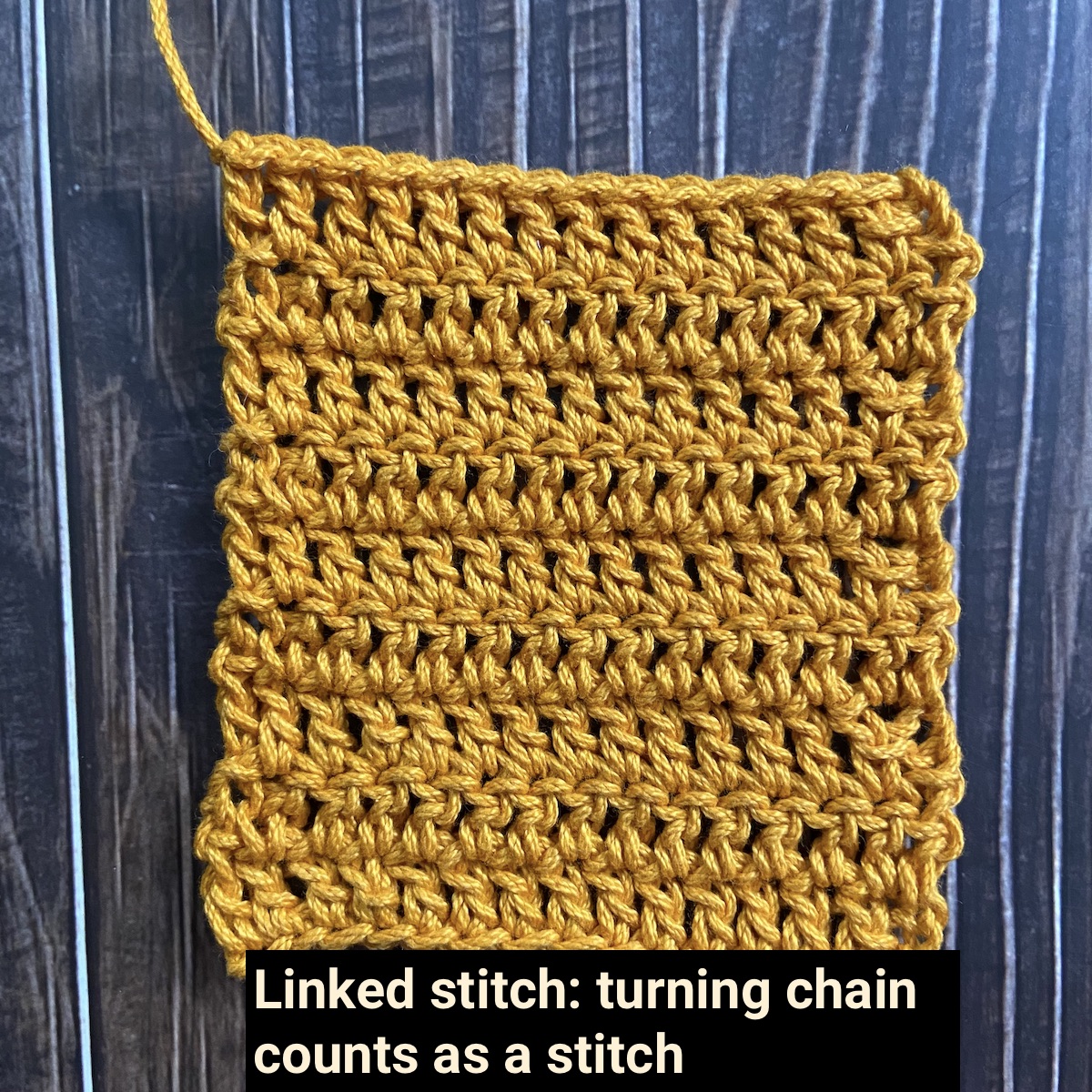
One of the best things about hosting Q&A events for Creative Crochet Corner is that I get to find out what questions our members have and which crochet issues are common. One of the things that has come up many times is this question:
“Why do the sides of my double crochet fabric look uneven?”
This can be the result of many things. Often the cause is accidentally skipping or adding stitches at the beginning or end of the row. This can happen as a result of being inconsistent about working into the turning chains, or for newer crocheters, simply from having trouble discerning the first and last stitches of each row. Both of these issues can be alleviated by using stitch markers to keep track of the first and last stitch of each row.
But even when we know that we have a consistent number of stitches in each row, and even for experienced crocheters, taller stitchwork can still have an uneven edge. Why is this?
If you are counting the turning chain as a stitch, there is a small gap between the first stitch (the turning chain) and the next stitch. The turning chain is a bit thinner than a regular stitch and also the turning chain does not come directly out of the top of the stitch below (it comes from the side). This combination of issues creates the small window between stitches at the beginning of each row.
Note: The following collection of swatches are all made in the double crochet stitch pattern, but the issues shown below are also applicable to other taller stitch patterns.

To get rid of this window you might try not counting the turning chain as a stitch. This means that the turning chain is just used as a “ladder” to get your hook up to the level of working the next row, but the turning chain doesn’t actually count as a double crochet (or treble, or whatever tall stitch you are making). Because it doesn’t count as a stitch, you do not work into the turning chain at the end of your rows, and you will place your first stitch (after making the turning chain) in the first stitch of the row. This eliminates the window, but another issue appears; the edges of your work will look a little zig-zaggy now.

The zig-zagging along the side edge can be reduced quite a bit by making a slightly shorter turning chain. Most of the time we are told to make three chains for a double crochet turning chain. For me, when I am working in turned rows of double crochet and the turning chain does not count as a stitch, this makes the turning chain too tall and it swoops out toward the side edge. When I use only two chains for my double crochet turning chain, the turning chain stays closer to the side edge and is a bit less noticeable. The same goes for treble, double-treble, etc. I just use one fewer chain than is normally recommended for a smoother edge.

Another approach for making smoother edges is to use a linked stitch at the very beginning of each row. Linking the turning chain to the first double crochet will close the gap between the turning chain and the next stitch. Check out this video of working linked double crochet stitches to see how to do it. Even though the turning chain is linked to the next stitch, you still need to decide if it counts as a stitch or not. If the turning chain does not count as a stitch, you will make the next stitch (the double crochet that you link to the turning chain) into the first stitch of each row, and you will not work into the tops of the turning chains at the end of each row.

Conversely, if the turning chain counts as a stitch, you will work into it at the end of the next row, and the first “real” double crochet that you make (the double crochet that you link to the turning chain) will be worked into the second stitch of the row.

Because we all crochet a bit differently, the techniques shown above may have varying results in your own crochet. It’s always best to try things out and compare swatches to see what works best for the way you crochet. Looking at these samples side by side will help you to compare techniques and give you a good jumping off point to improve those edges. And no matter which technique works best, you can always work a single crochet border into your row ends to hide any uneven edges!

At last, a solution! Shorted turning chain solves my problem completely. Thanks!
I really dislike turning chains as the first stitch of a row. I prefer stacked single crochet stitches. You can stack as many as you like to get to the taller stitch height and you eliminate the window
I really love the linked stitch idea. I have used some of the other suggestions in the past and they worked well enough but the taller stitches always gave me problems when I would get ready to add a border. I really dislike the holes!!! I am going to used the linked stitch idea in my next project. Thank you.
This was VERY helpful! I thought I was the only one having this problem! The dropped stitch of the chain is a great idea.
After many tries to make it even, I dropped a stitch and it works. Glad to know I'm not the only one with this problem.
Thank you the advice on the turning chain ,it’s going to help me for sure 🤗